In a world where pixels reign supreme and virtual battles unfold daily, online gaming has become more than just a pastime—it’s a global phenomenon. With millions of players logging in to conquer realms and build empires, the statistics behind this digital playground reveal a treasure trove of insights. Ever wondered how many hours gamers spend slaying dragons or strategizing in epic showdowns?
Online Gaming Statistics
The online gaming industry has experienced remarkable growth, with over 3 billion gamers worldwide as of 2023. Daily engagement statistics indicate that players log an average of 7 hours weekly, showcasing their commitment. Economic impacts are significant; global revenue reached $196 billion in 2022.
Mobile gaming dominates the landscape, accounting for approximately 50% of the total gaming revenue. Console and PC gaming follow, contributing 30% and 20%, respectively. Popular genres include action, shooter, and role-playing games, each attracting millions of players.
Demographics reveal interesting trends. The average age of gamers is 34, with a nearly equal split between male and female participants. Esports has surged in popularity, drawing 474 million viewers in 2022, a 20% increase from the previous year.
Geographically, Asia-Pacific leads in gaming population, representing over 50% of global players. North America and Europe follow closely. Engagement peaks during weekends and holidays, indicating gamers’ preference for leisure time.
While casual gaming remains prevalent, competitive gaming garners attention through tournaments and professional leagues. Such events can attract large audiences, sometimes exceeding traditional sports viewership.
Emerging technologies like virtual reality (VR) and augmented reality (AR) contribute to evolving gaming experiences. Future projections suggest continued growth, with revenues expected to surpass $200 billion by 2025.
These statistics underscore the significance of the online gaming phenomenon, revealing its impact on culture, economics, and technology.
Current Trends in Online Gaming

The online gaming landscape continues to evolve, reflecting diverse player interests and preferences. Understanding player demographics reveals significant insights into who engages with these virtual experiences.
Player Demographics
Gamers span various age groups, with the average age being 34 years. Both genders participate nearly equally in gaming, highlighting the universal appeal of this medium. Data shows that 44% of gamers are female, while 56% are male, demonstrating a balanced representation. The majority of players gravitate toward social interaction, often forming communities around games. Engagement frequently peaks among younger players, particularly those aged 18 to 34, who actively participate in both casual and competitive gaming. As of 2023, the global gaming community has surpassed 3 billion individuals. This growth signifies a shift towards greater inclusivity, attracting older demographics as well.
Popular Game Genres
Action games remain at the forefront of player preference, captivating audiences with intense gameplay. Shooters also dominate, appealing to those drawn by competitive elements and adrenaline-filled experiences. Role-playing games (RPGs) continue to flourish, offering immersive storytelling and character development. Approximately 25% of gamers favor these genres, showcasing a desire for engaging narratives. Furthermore, mobile gaming has surged, influencing genre popularity as players seek convenience and accessibility. Strategy games hold appeal as well, requiring tactical skills and critical thinking. This diverse combination of genres attracts millions of players, broadening the gaming market’s reach.
Economic Impact of Online Gaming
Online gaming significantly influences the economy, showcasing immense revenue generation and varied employment opportunities.
Revenue Generation
The online gaming industry generates substantial revenue. In 2022, this sector reached $196 billion globally. Mobile gaming, capturing approximately 50% of total earnings, leads the market’s financial success. Action, shooter, and role-playing games attract millions of players, driving additional income. It’s noteworthy that forecasts predict revenues might exceed $200 billion by 2025. Gamers log an average of 7 hours of gameplay weekly, contributing to steady engagement and profitability. Successful game releases often follow extensive marketing campaigns, further amplifying revenue streams.
Employment Opportunities
Employment opportunities in online gaming continue to expand. Game development companies hire a diverse range of professionals, from programmers to artists and writers. Esports organizations increasingly offer positions in management, coaching, and event production. Freelance opportunities, such as content creation and streaming, also gain popularity, providing alternative income avenues for gamers. According to industry reports, the gaming sector employs millions worldwide, with figures steadily increasing. Additionally, educational institutions now offer specialized courses in game design and development, further fueling growth in this dynamic industry.
Technological Advancements in Online Gaming
Technological advancements significantly transform online gaming experiences. High-speed internet access enhances gameplay by reducing lag and allowing seamless interaction among players. Game engines such as Unreal Engine and Unity lead to realistic graphics and immersive environments, attracting more players into virtual worlds.
Virtual reality (VR) and augmented reality (AR) integrate into gaming, creating engaging experiences. VR headsets offer players the chance to fully immerse themselves in different scenarios, with a projected market value expected to exceed $200 billion by 2025. AR overlays digital content on real-world environments, providing unique gameplay opportunities.
Cloud gaming emerges as a major trend, enabling players to stream games directly without high-spec devices. This approach increases accessibility, expanding the gaming demographic. As of 2023, cloud gaming services have gained traction, offering diverse libraries to players for a subscription fee.
Mobile technology contributes to online gaming, dominating the market with approximately 50% of total revenue. Games optimized for mobile devices allow gamers to play anytime and anywhere, driving engagement up among casual players. Smartphones enhance the gaming experience with touch functionality and motion sensors, catering to younger audiences.
Artificial intelligence (AI) also plays a vital role in modern gaming. AI algorithms personalize player experiences and adapt in-game challenges, enhancing engagement levels. Machine learning capabilities enable developers to analyze player data, leading to optimizations and improved game mechanics.
Data analytics continues to shape the competitive landscape of online gaming. Developers use analytics to understand player behavior and preferences, guiding game design choices. As more gamers log an average of 7 hours each week, optimizing gameplay becomes crucial for retaining player interest.
Emerging technologies push the boundaries of gaming, ensuring exciting futures for players and developers alike.
Challenges Facing the Online Gaming Industry
Regulatory issues present significant challenges for online gaming. Different regions impose varying laws regarding gameplay, age restrictions, and taxation, complicating market entry for developers. Security threats also pose risks, as cyberattacks can compromise player data and disrupt gaming networks, leading to distrust and potential loss of players.
Players experience issues related to connectivity and server stability. Frequent lag or disconnections frustrate users, which negatively impacts their gaming experience. Furthermore, the increasing number of players strains server resources, necessitating upgrades in infrastructure to maintain quality.
Monetization strategies challenge developers and publishers. While microtransactions and subscriptions provide revenue, they also draw criticism for encouraging pay-to-win models, harming player satisfaction. Balancing profitability with fair gameplay remains a crucial hurdle.
Mental health concerns emerge in discussions about online gaming. Prolonged gaming sessions contribute to addiction, which affects players’ social lives, work, and well-being. Educators and parents voice apprehension about youth engagement in excessive gaming, prompting organizations to address these issues.
Competition intensifies among game developers. The vast market includes numerous genres and platforms, making it difficult for new games to gain traction. Standing out requires innovative gameplay mechanics and effective marketing, which can strain smaller studios’ resources.
Sustainability represents a growing concern as the industry expands. Environmental impacts arise from energy consumption and electronic waste associated with gaming hardware. Developers now explore eco-friendly practices to minimize their carbon footprint and appeal to environmentally conscious consumers.
Addressing these challenges is crucial for the online gaming industry’s continued success and growth.
Engagement and Passion for Gaming
The online gaming landscape is evolving rapidly and its influence is undeniable. With billions of players and a booming industry, gaming has transcended entertainment to become a significant cultural and economic force. The advancements in technology and the rise of esports illustrate the dynamic nature of this sector.
Challenges remain as developers navigate regulatory hurdles and address player concerns about security and mental health. However the potential for growth is immense. As new technologies emerge and gaming becomes even more accessible, the future looks bright for both players and developers alike. The ongoing engagement and passion for gaming will continue to shape the industry for years to come.

